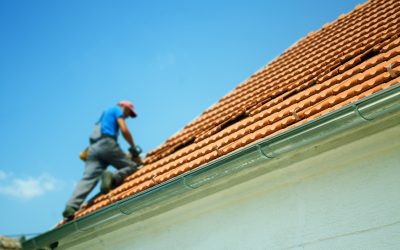The roof is the largest part of the home, and it is one you cannot inspect from the ground level. There may be a number of problems with the roof depending on the age of the home. The only way to find any problems is to hire a qualified Roofer in Fort Wayne, Indiana to go onto the roof and inspect it including all of the flashing, the drip edges, and shingle quality.
The shingles must be removed before assessing the deck. However, if the deck is warped, split, rotten, or otherwise useless, then it too must be removed. The replacement deck is manufactured wood made to a specification that meets local code or that your roofer can say is high quality decking. A moisture barrier is put down next and the seams should overlap. A hot tar gun seals the edges of the moisture barrier. A starter strip is run along the edges of the roof and on top of the moisture barrier. It is nailed down with a nail pattern that meets local code. A Roofer in Fort Wayne, Indiana will know the code.
Next, a drip edge is installed with the edge under the starter strip and nailed in place. The drip edge should be made of 38 gauge aluminium or heavier and nailed in place. It is bent downward over the starter strip and the underpayment so that no moisture can be blown under the roofing. The drip edge adds an appearance factor to the home that is valuable. Sircey Roofing And Sheet Metal will have the material.
A moisture barrier should be placed in the valleys of the roof and nailed in place so that the water will run down and off of the roof. Then the shingles are applied over the barrier. The vent fans are installed with a moisture barrier underneath the edges to prevent water from getting in under the vent mounting plate. The edge should be sealed with tar and a small amount of tar should be placed on each nail head that is used to secure the vent to the roof.
The roof cap is essential for ventilation. A one inch wide gap is cut where the roof joins at the peak. A heavy tar paper cap in nailed in place leaving room for the attic to vent at the ends of the run. Shingles are installed over the cap and nailed in place.








